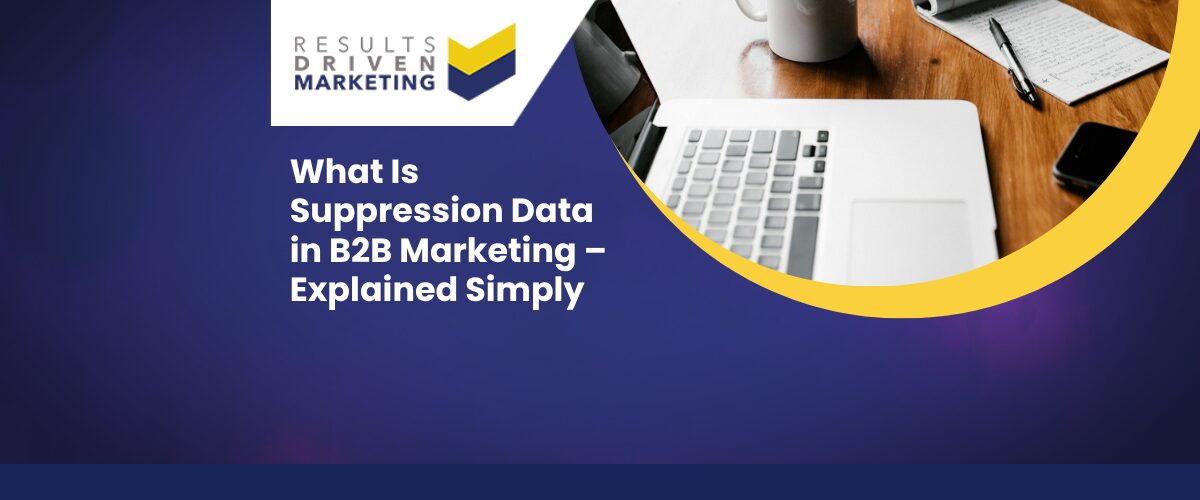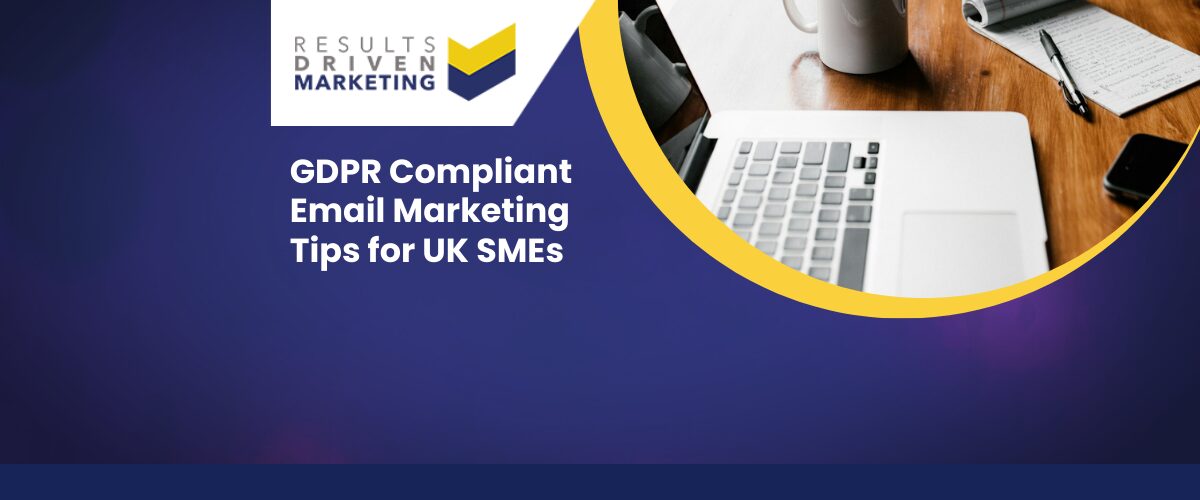
What Is Suppression Data in B2B Marketing – Explained Simply
What is suppression data in B2B marketing? It’s one of those terms that doesn’t get much airtime—but it can make or break your campaign. Whether you’re emailing, calling, or posting to new prospects, suppression data helps ensure you’re contacting the right people—and avoiding the wrong ones.
For UK SMEs using purchased data or running cold outreach, this isn’t just a nice-to-have—it’s a legal and strategic necessity. Suppression data keeps you compliant with regulations like GDPR and PECR, prevents you from annoying people who’ve opted out, and protects your sender reputation.
In this post, we’ll explain exactly what suppression data is, why it matters, and how it fits into your marketing process. No jargon. No tech-speak. Just practical guidance so you can stay compliant, avoid waste, and get better results from your campaigns.
Table of contents:
What Is Suppression Data?
What is suppression data in B2B marketing? In simple terms, it’s a list of contacts you deliberately exclude from your campaigns. While most marketing lists focus on who to contact, suppression data focuses on who not to.
Suppression data helps you avoid reaching people who:
-
Have previously opted out of your communications
-
Are registered on do-not-contact databases like CTPS
-
Have bounced, complained, or unsubscribed in the past
-
You no longer want to target (e.g. competitors, old clients)
This isn’t just about ticking legal boxes—it’s about keeping your outreach clean, compliant, and respectful. By removing unwanted or risky contacts, suppression data protects your sender reputation, reduces costs, and keeps your campaigns focused on real opportunities.
Why Suppression Data Matters
What is suppression data in B2B marketing if not one of the most important tools for staying compliant and efficient? Here’s why it matters so much for UK SMEs.
Legal Compliance (GDPR, PECR, CTPS)
-
Suppression helps you avoid contacting people who have explicitly opted out or are legally protected from unsolicited outreach
-
It’s a key part of complying with laws like GDPR, PECR, and the Corporate Telephone Preference Service (CTPS)
-
Ignoring suppression can lead to fines, legal action, or being blacklisted by regulators
Maintains Your Reputation
-
Unwanted emails or cold calls damage your credibility
-
Suppression reduces complaints and spam reports
-
Helps your messages land in inboxes, not spam folders
Saves Time and Budget
-
Why waste resources on people who’ve already said no?
-
Suppression ensures your sales team focuses on high-potential contacts
-
It stops you paying to send mail, dial numbers, or push emails that will never convert
Examples of Suppression Data in Action
What is suppression data in B2B marketing without real-world context? Let’s break down how suppression lists are used across different types of outreach:
Email Campaigns
-
Opt-outs: When someone unsubscribes, their email should be added to a suppression list so they’re excluded from future sends
-
Hard bounces: Failed addresses should be suppressed to avoid repeated delivery issues
-
Domain suppression: You may exclude competitors or sensitive clients from outreach (e.g. @competitor.co.uk)
Telemarketing Lists
-
CTPS Screening: Businesses registered with the Corporate Telephone Preference Service must not be contacted without prior consent
-
Manual exclusions: You can suppress specific companies or numbers that have requested no contact
Direct Mail
-
Do-not-mail requests: Some recipients may opt out of postal communication—respecting this improves trust and compliance
-
Failed delivery records: If mail has previously bounced back or gone undelivered, it’s best to suppress those addresses
How to Build and Maintain Suppression Lists
What is suppression data in B2B marketing without a process to manage it? Suppression isn’t just a list—it’s an ongoing system that protects your campaigns and your business.
Sources to Track
You should build your suppression list from:
-
Email unsubscribes – from your own campaigns or platforms like Responder
-
Hard bounces – remove addresses that repeatedly fail
-
Complaint feedback – if someone marks your email as spam, suppress them
-
Client requests – any “do not contact” requests, regardless of channel
-
CTPS-screened phone numbers – required by law before calling UK businesses
Best Practices
-
Centralise your suppression list – Keep one master list and sync across platforms (email, CRM, call tools)
-
Update regularly – Add new opt-outs or bounces after every campaign
-
Apply before every send – Run your marketing list against the suppression list every time
The Risks of Ignoring Suppression Data
What is suppression data in B2B marketing if not a line of defence? Skip it, and the risks can stack up fast—legally, financially, and reputationally.
GDPR and PECR Violations
-
Contacting someone who has opted out or is on a suppression list breaches UK privacy laws like GDPR and PECR
-
This can lead to formal complaints, investigations by the ICO, and potentially hefty fines
Deliverability and Blacklisting
-
Repeatedly emailing suppressed contacts can trigger spam filters
-
Your domain or IP may get blacklisted, affecting all future outreach
Poor Campaign Results
-
Suppressed contacts don’t engage—they unsubscribe, complain, or ignore your message
-
This skews your metrics and leads to misleading campaign performance data
Damage to Brand and Trust
-
Contacting someone who’s asked not to be contacted reflects badly on your business
-
It shows a lack of care and attention—traits that hurt long-term credibility
Why Choose Results Driven Marketing
At Results Driven Marketing, we understand that suppression data isn’t just about ticking boxes—it’s about running smarter, more respectful campaigns that protect your brand and boost your results.
-
We build suppression into everything we do
From day one, we help you manage opt-outs, CTPS checks, and exclusions as part of your data process—not as an afterthought. -
Straightforward advice
You don’t need legal training or technical tools—we break down what you need to know in plain English. -
Support across every channel
Whether you’re emailing, calling, or mailing, we’ll help you implement suppression lists that keep your outreach clean and compliant. -
Clean, targeted data to match
Our email lists are designed for UK SME campaigns—and we’ll guide you on how to use them safely and effectively.
Need a second opinion on your suppression process? Contact us for honest, jargon-free help.
Final Thoughts – Suppression Data Is a Smart Move, Not a Burden
What is suppression data in B2B marketing? It’s not just a compliance tool—it’s a performance enhancer. Done right, suppression helps you avoid legal risks, reduce wasted effort, and improve the quality of your campaigns.
To recap:
-
Suppression data tells you who not to contact—and why that matters
-
It protects you from GDPR breaches, spam complaints, and blacklisting
-
It keeps your sales and marketing teams focused on high-potential contacts
-
Managing suppression is simple with the right systems and support
Think of suppression data as your safety net—it catches the issues before they cost you time, money, or reputation. If you’re unsure whether your lists are clean or your process is up to scratch, we’re here to help.
Contact us for expert advice—or browse our email lists to start fresh with data that works.
Results Driven Marketing
Helping UK SMEs go from bad data to more customers and profits
📍 Newcastle | 📞 0191 406 6399 | 🌐 rdmarketing.co.uk





